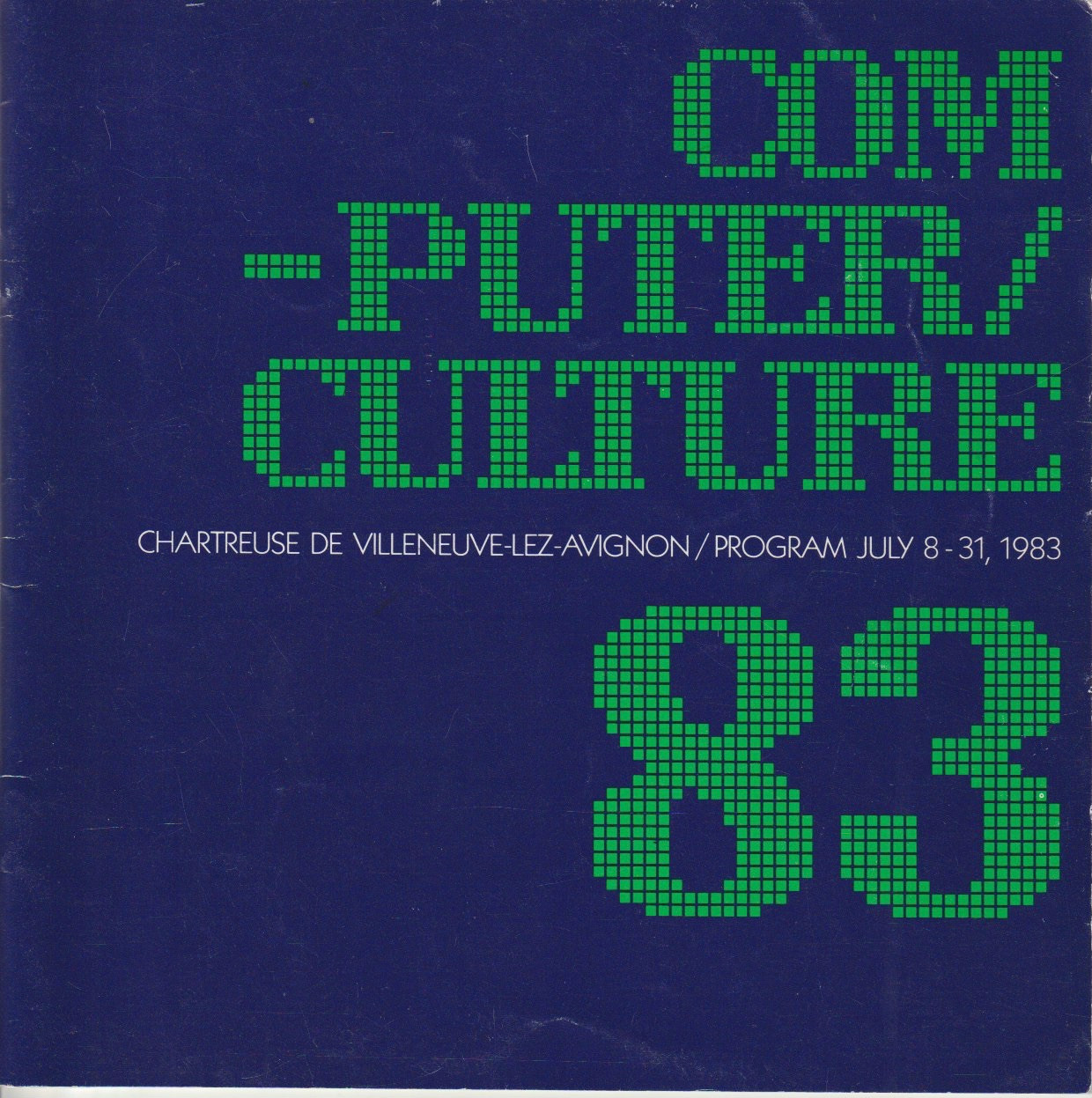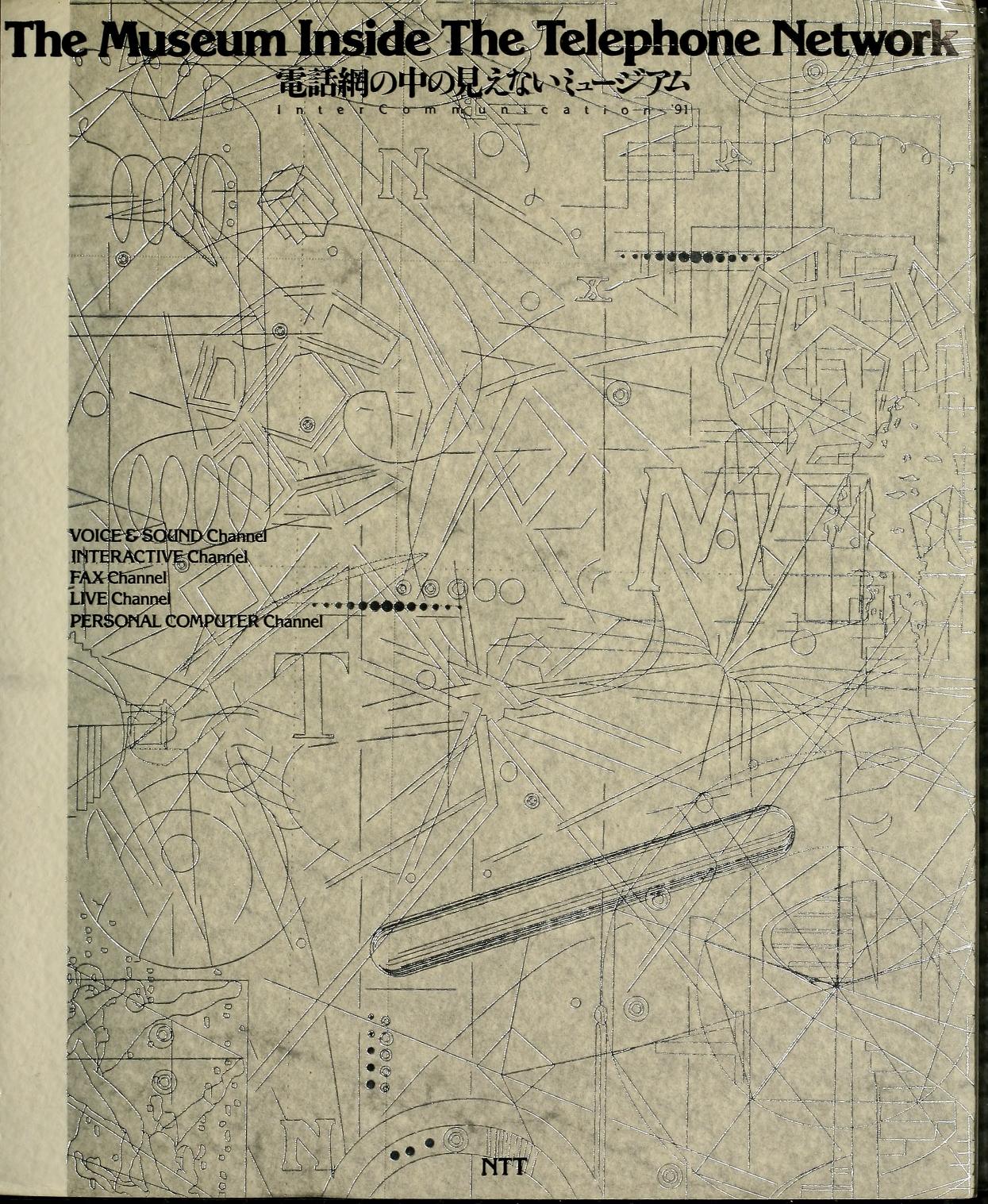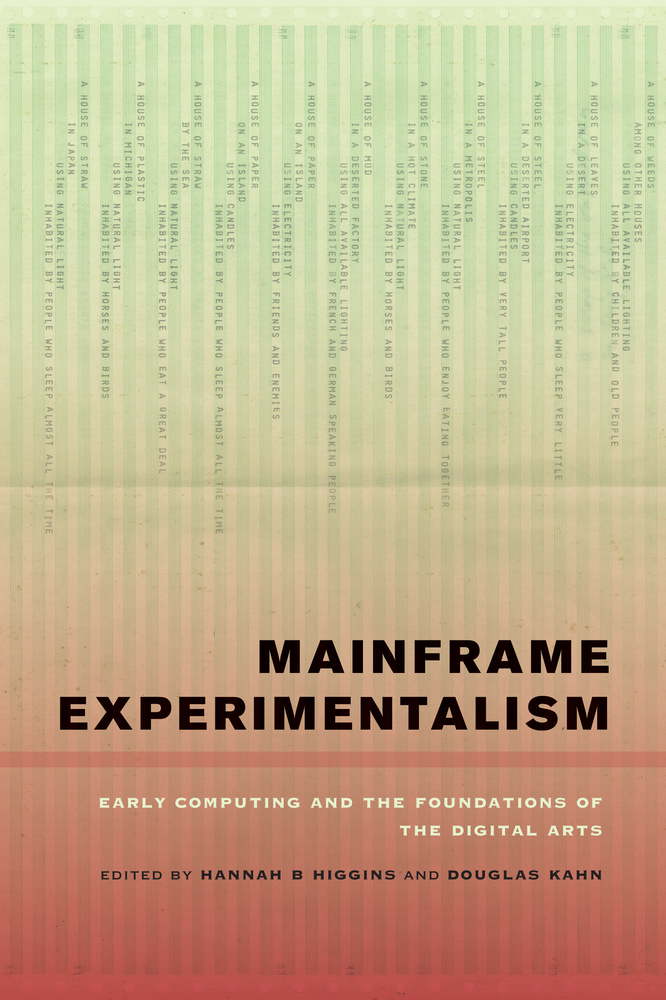Computer/Culture 83 / Informatique/Culture 83 (1983) [EN/FR]
Filed under booklet | Tags: · computer art, electronic art, media art, software art

“The programme booklet and programme flyer of a festival (“rencontre”) on computer culture organised by the French organisation C.I.R.C.A. in Villeneuve-lez-Avignon, 8-31 July 1983.
This was an important meeting of the French (and US-American) art, technology and science scene at the time; participants included Vilém Flusser, Edmond Couchot, Ted Nelson, Lilian Schwartz, Benoît Mandelbrot, Jean-Pierre Balpe, and many others. The programme included workshops e.g. by Michel Bret, Hervé Huitric, Monique Nahas, and by ALAMO.
This is also four months before the exhibition ELECTRA opened in Paris, in November 1983.”
Publisher CIRCA, Villeneuve-lez-Avignon, 1983
12+16 pages
via Andreas Broeckmann
PDF (20 MB)
Comment (0)InterCommunication ’91: The Museum Inside the Telephone Network (1991) [Japanese/English]
Filed under catalogue | Tags: · art, communication, computer art, computer graphics, fax, interactive art, media art, sound art, telephone

The exhibition organised by the Project InterCommunication Center (ICC), founded by the Japanese telecom NTT, was a pioneering project investigating the implications of networked communication for the museum institution. The exhibition was only accessible to home users by means of the telephone, fax, and in a limited sense computer networking. It was meant as a model for a new kind of an “invisible” museum. Later it was followed up by another ICC exhibition The Museum Inside the Network (1995). The ICC opened its exhibition space in 1997.
The works and messages from almost 100 artists, writers, and cultural figures were available through five channels. The works in “Voice & sound channel” such as talks and readings on the theme of communication could be listened to by telephone. The “Interactive channel” offered participants to create musical tunes by pushing buttons on a telephone. Works of art, novels, comics and essays could be received at home through “Fax channel”. The “Live channel” offered artists’ live performances and telephone dialogues between invited intellectuals to be heard by telephone. Additionally, computer graphics works could be accessed by modem and downloaded to one’s personal computer screen for viewing.
Contributors include Laurie Anderson, J.G. Ballard, Christian Boltanski, Pierre Boulez, William S. Burroughs, Merce Cunningham, Daniel Buren, John Cage, Jacques Derrida, Allen Ginsberg, Philip Glass, Félix Guattari, Pontus Hultén, Derek Jarman, Jeff Koons, Daniel Libeskind, Jackson Mac Low, Judith Malina, Renzo Piano, Steve Reich, Ryuichi Sakamoto, Akira Sakata, Paul Virilio, Robert Wilson, Tadanori Yokoo, John Zorn, a.o.
Edited by Urban Design Research
Introduction by Akira Asada, Yutaka Hikosaka, and Toshiharu Itou
Publisher NTT, Tokyo, 1991
259 pages
PDF (76 MB)
PDF (hi-res, 235 MB)
Hannah B. Higgins, Douglas Kahn (eds.): Mainframe Experimentalism: Early Computing and the Foundations of the Digital Arts (2012)
Filed under book | Tags: · art history, computer art, computing, history of computing, intermedia art

“Mainframe Experimentalism challenges the conventional wisdom that the digital arts arose out of Silicon Valley’s technological revolutions in the 1970s. In fact, in the 1960s, a diverse array of artists, musicians, poets, writers, and filmmakers around the world were engaging with mainframe and mini-computers to create innovative new artworks that contradict the stereotypes of ‘computer art.’ Juxtaposing the original works alongside scholarly contributions by well-established and emerging scholars from several disciplines, Mainframe Experimentalism demonstrates that the radical and experimental aesthetics and political and cultural engagements of early digital art stand as precursors for the mobility among technological platforms, artistic forms, and social sites that has become commonplace today.”
Publisher University of California Press, 2012
ISBN 9780520268371, 0520268377
xiv+362 pages
Reviews: Hubert Howe Flushing (Comp Music J, 2013), Rob Myers (Furtherfield, 2015).
Comment (0)
